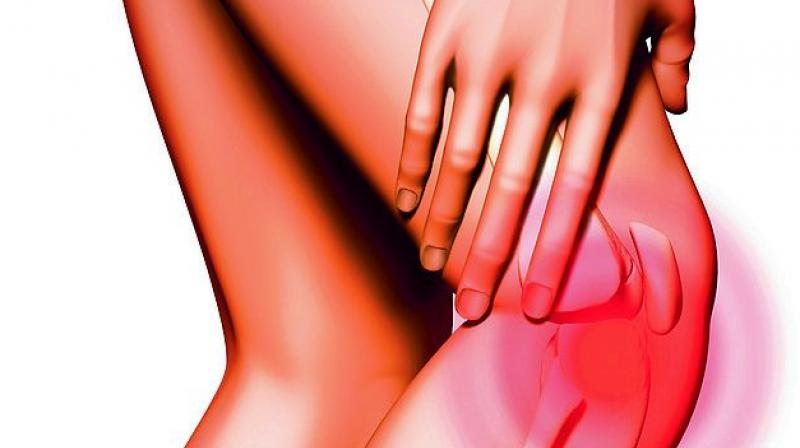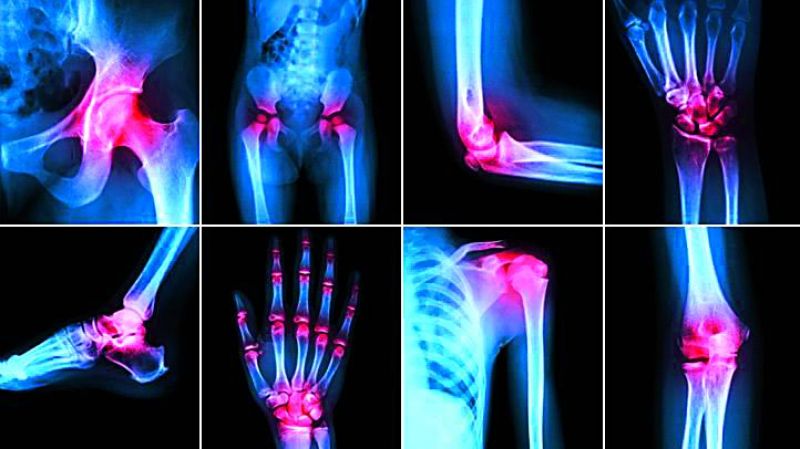Identify arthritis symptoms
Arthritis, in its many forms, can limit you physically if not treated early on.

Pain and inflammation in the joints, bones and ligaments, along with stiffness, is one of the major complains of people suffering from arthritis. Often, the pain is regular but unstable, which leads to people bearing the pain for a long time. In fact, three out of four people bear the symptoms of arthritis for as long as five years before they even consult a doctor.
A delay in the diagnosis of the inflammatory disease is found to be one of the major reasons for the need of a continuous and prolonged treatment, where the healing time is as long as the time in which the problem aggravates over the years. In India, about 18 crore people suffer from arthritis, of which osteoarthritis is one of the most disabling disease.
 Infographic
Infographic
Dr V. Sarath Chandra Mouli, chief rheumatologist, KIMS Hospitals, talks about arthritis and rheumatism and the need to tackle these problems early on for better results and relief.
Q1. What is Rheumatic and Musculoskeletal Diseases (RMDs)?
Rheumatism is a painful medical condition that affects the joints, bones, ligaments, muscles and tendons. Arthritis means joint inflammation. The symptoms of arthritis are pain, tenderness, swelling, redness and warmth in the affected joints. RMDs is another term for both these problems in which musculo-skeletal diseases are also diagnosed.
Q2. Both the diseases affect women more than men. Why?
There are more than 200 different arthritic conditions described in medicinal literature, ranging from osteoarthritis and gout to connective tissue disorders like rheumatoid arthritis and lupus. Rheumatic diseases can affect individuals of all ages and both sexes, but are more common in females. Research shows that hormones play a major role apart from age and weight issues.
Q3. Are RMDs identifiable early?
Rheumatic diseases significantly impact daily life. Early diagnosis is key to preventing further damage. The diagnosis of arthritis is often delayed. For example, rheumatoid arthritis take one to two years, lupus takes two to three years, ankylosing spondylitis takes 10 years while Sjogren’s syndrome takes as long as 20 years. Delay in diagnosis is primarily due to lack of awareness and non-availability of specialists. If not diagnosed early, a person’s daily activities are affected, reducing quality of life.
Q4. What is the clinical representation of RMDs and how many people are affected by it?
RMDs affect a quarter of the country’s population including males, females, adults and children. Autoimmune rheumatic diseases predominantly affect females. Spondylo arthritis and gout affect mostly men. Osteoarthritis and osteoporosis is seen in the elderly. Juvenile rheumatoid arthritis is seen in children. In clinical establishments, it has been noted that RMDs are the biggest cause of sick leaves and also premature retirement. In certain cases, it has been found that non-treatment has led to a shorter life expectancy.
Q5. What are the causes of these diseases?
There are many different causes:
1. In auto-immune rheumatic disease, the exact cause is not known but it is related to an imbalance in the immune system.
2. Gout is due to high uric acid in the blood. It could be hereditary or be caused by an excessive intake of red meat or alcohol.
3. Osteoarthritis is linked to obesity, a sedentary lifestyle and occupation (miners, footballers).
Q6. What are the symptoms of these diseases?
Joint pain, swelling, early morning stiffness and redness and warmth of the affected joints are some of the main symptoms. They are often accompanied by muscle pain and weakness and reduced range of movement because of deformities in the joints.
Some of the other symptoms are fatigue, severe lower back pain in the morning, excessive hair fall, recurrent mouth ulcers, increased skin pigmentation and red rashes on the face and exposed parts of body.
Q7. What triggers these disorders?
The risk factors which have been accounted for in literature are obesity, increasing age, occupational hazards, alcohol, red meat, smoking and genetic factors.
Q8. What is the treatment module?
The treatment module now aims towards physiotherapy, exercises and drugs. Hence, it’s a combination which will help the body get the best results. In certain cases, we have also found that if a patient continues exercising and physiotherapy after stopping the intake of drugs, it helps in further improvement. For this group of diseases, it is very important to have adequate sleep and quit smoking and alcohol.
RMDs are classified into inflammatory and non-inflammatory diseases.
Non-inflammatory diseases: Osteoarthritis in the knees, degenerative diseases of the spine, osteoporosis and fibromyalgia.
Inflammatory diseases: Rheumatoid arthritis, lupus, ankylosing spondylitis, psoriatic arthritis, dermatomyositis, scleroderma, mixed connective tissue diseases and juvenile rheumatoid arthritis.
Myths and facts about RMDs
Myth 1: Arthritis is an old person’s disease.
Fact: Arthritis can occur at any age.
Myth 2: Arthritis is induced by a cold, wet climate.
Fact: Climate is neither the cause nor the cure of arthritis.
Myth 3: Arthritis is caused by a poor diet.
Fact: There is little scientific evidence that specific food prevents or causes arthritis. There are a few diseases, such as gout, where intake of certain types of food or drinks (alcohol) can precipitate an attack.

